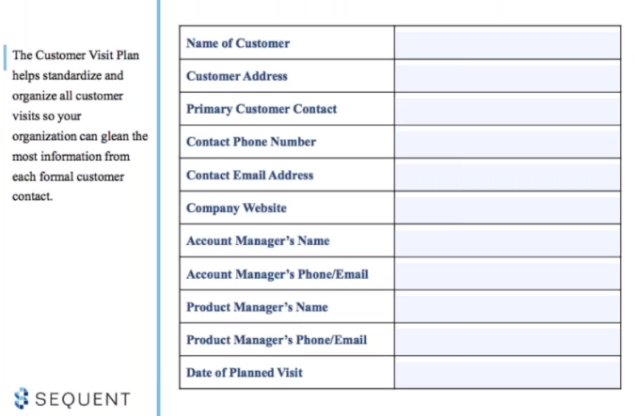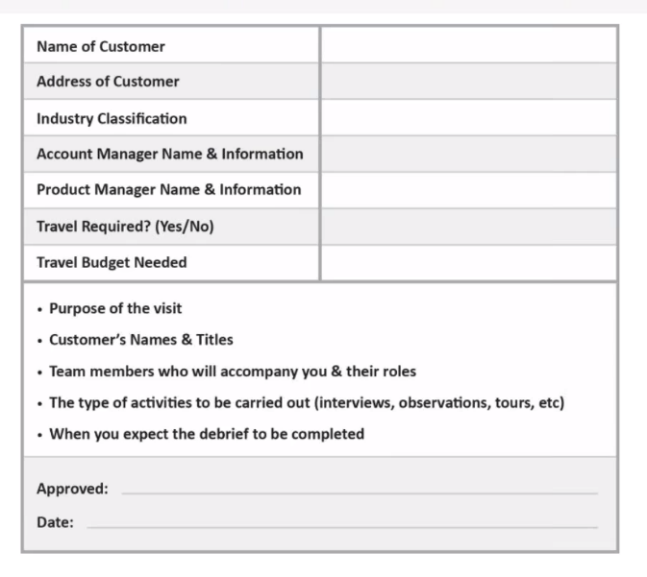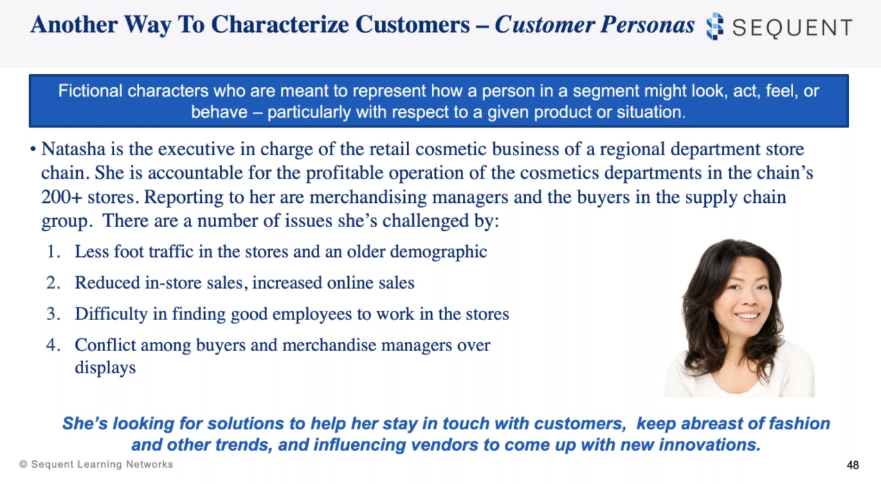Q&A with Sequent Learning Networks CEO Steven Haines Webinar Walk a Mile in Your Customer’s Shoes

As a sponsor of Product Management Today, Revulytics welcomed Steven Haines into their webinar series. In this blog post, Revulytics has highlighted some of the insights from Steven’s webinar, “Walk A Mile In Your Customer’s Shoes”. We encourage you to watch the full on-demand webinar for even more details.
In this webinar, Steven Haines, founder and CEO of Sequent Learning Networks and author of The Product Manager’s Survival Guide, draws on extensive product leadership experience to show how to develop customer empathy, develop great customer insights, and transform them into better value propositions. Haines shares knowledge developed through 17+ years leading Sequent, a training and advisory firm that specializes in serving product managers who want to excel, and product leaders who want to optimize their organizations and product portfolios.
We hear a lot about capturing the “voice of the customer.” What’s wrong with how companies are already doing that?
My clients often tell me, ‘we did a voice-of-the-customer study.’ Some do surveys, some focus groups, some do all kinds of different things. But there are so many ways to capture voice, the term almost loses its meaning. The problem is: there isn’t a single voice of any one customer at any one time. There are many variables around the transience of customer needs and experiences. We need to figure out whose voice we want to hear, when we might be able to hear it, and what forum is best to hear it in.
That’s what I want to talk about: How to identify the right customer. How to understand what they do by visiting, observing, and interviewing them. How to draw something valuable from what we observe. And how to build a realistic customer value proposition, fine-tuning what we offer to truly communicate the benefits and experiences we want to create.
Recently, I discussed the effectiveness of R&D spend with a client in a huge organization. They were spending $360 million on R&D every year, and product managers were lamenting the resources they didn’t have, and everything they couldn’t do. But 75% of their business cases weren’t delivering results. When you see $250M that’s not giving you returns, maybe you need to do things differently.
What contributes the most to product failures like that? Is it development problems? Poor financial planning? Lack of capable resources? No: it’s creating products that no one wants.
Most product managers intuit that this is a problem, but how do we fix it? Well, think about how new products often emerge. Someone says: I’ve got a great idea for a product. Or, wow, wouldn’t it be great if we could do these things? Or: this is great new technology, what can we do with it? In all those cases, it’s an inside-out proposition. Maybe I’m combining my company’s “tribal” understanding with feedback from the sales guys. Maybe I’ve considered or possibly even experienced a customer’s problem, but I’ve never validated it. Nobody’s really looking at the customer the way we need to.
So, if we want to really hear the customer’s voice, where do we start?
Start by understanding who your customers are.
In my workshops, I ask: name a customer. What comes back is names of companies, not people. I say, that’s great, but you can’t necessarily ascribe a common set of needs to a company that’s personifying a building. Who works there? Lots of people do. Create an organization chart of a customer company. Identify the primary people you work with. Characterize them: typical marketing stuff, users, decision-makers, influencers. Who are they?
You may learn about the end-customers of an intermediary. Even an online retailer is an intermediary: that’s not a direct-to-consumer model. Even inside a family, aren’t there kids pulling on their parents’ purse strings, get me, buy me, do me, and all that other stuff?
I once asked a large wireless carrier: you have a big retail operation, and sell other peoples’ stuff in your retail stores – Samsung, Apple iPhones. Do you go watch a customer pick a phone, buy it, go through the process of turning it on? And they said: no, the OEM does that work. Are you sure? When there’s a big Apple announcement, are you certain it’s based on research from their customer base? How could you influence your supplier to provide the right features and capabilities if you don’t understand that end-customer directly? If you personally saw the frustration in their face, maybe you’d think differently about making things easier.
I worked with a paint manufacturer whose primary channel is a big home improvement box retailer. The two companies collaborated to understand their different types of customers. They found, for instance, a DIY homeowner needs wants primer inside the paint, and paint that doesn’t drip, while contractors need a thinner paint with better coverage that goes through a sprayer for mass market applications. Those are distinct customer needs, and if the paint company hadn’t collaborated closely with the retailer, they might not have produced the right products.
Once you know whose voices you need to hear from, what do you do next?
You want to understand what those people do on a day-to-day basis, and how they do it. When I was involved in Oracle’s CRM and business process automation business, we had to understand call centers and customer interaction centers. There are agents, workforce managers, and technologists. There are other people in business lines whose products or services may be represented through those centers, either for reporting troubles or taking orders – a huge ecosystem of people.
I’d sit inside call centers with a headset on, listening to an agent and the company’s customers interact, or watching operations and the people coming and going and the distractions they faced. We needed to figure out who’s having problems and what they are, to help them do things differently and better.
Going on site with a customer is not a trivial task. Can you talk about how you plan and budget that?
You may want to make a mini-business case for getting resources to visit a customer. Be specific about what you’re trying to do, why you’re trying to do it, and whose eyes you need with you.
There’s a phenomenon I call “refrigerator blindness”: you open the refrigerator and you don’t see the ketchup, but someone else recognizes it’s right in front of you. So you want to bring a team that can collectively see a holistic picture of what’s going on in your customer’s environment. Maybe one team member will be the scribe, another is a better interviewer: you want roles and responsibilities clearly established so you can fully record what you see.
Describe: What’s the purpose of our visit, who do we want to see, how will we prepare, what are the diplomatic protocols, what’s our agenda, how will we capture data, what’s our budget, how will we debrief? You want to convince your bosses you’ll come back with a readout, so everyone can talk together about what you saw and heard, and how that impacts your strategy and the value proposition you’re trying to build.
I’ve created a request form template to help you organize this. You can download it and other worktools at bit.ly/PMT-templates.
Choose a customer your account team has a good relationship with. Customers love talking to product managers and other people who really care about what’s going on in their lives. But some salespeople are very protective of their territories, so if you have a positive relationship with certain salespeople or account managers, they may provide you with greater entrée.
Make sure to understand how communication will take place with a primary contact or champion within the customer’s workplace. For example, you might want to capture videos; you might need advanced permissions to actually see some of you want to see; there may be proprietary stuff on the customer’s premises. I provide another template to help you coordinate the visit with your customer.
Can you spend a little more time discussing the kinds of things that might happen on a visit?
There are four kinds of things you can do: visit sites, see customer presentations, do behavioral studies, or do interviews.
I talked earlier about listening to customers in a call center. Once I was at a bank and an irate customer called in. You could see right away the customer was flustered, but you also saw the agent wasn’t very nice. And when you see or hear these dynamics, what could it mean? Maybe there could be better training for the agent, or maybe there was a systemic problem somewhere else in the company. Sometimes the things you’re trying to do to build a better value proposition don’t involve adding another product feature. They might involve something else entirely different that enhances the customer experience or removes a problem with it.
I remember a customer presenting a workflow concerning on-site repairs. It was beautifully done and I understood it perfectly. Then I started going on truck rolls with the technicians to see what they were actually doing, and it was a lot more complicated and very different. So you have these functional silos within a customer company, and you want to break those down and parse all the different players or actors to see the real problems you might fix.
As for behavioral studies, think broadly and holistically. There’s a well-known case where a diaper company wanted to figure out how to improve their product, so they gave new mothers glasses with cameras and watched them change their kids. And they found mothers changing their kids on top of washing machines, cars, all kinds of places. The mothers had to struggle to hold the child while using two hands to unlock the box of wipes. So the answer wasn’t enhancing the wipe but enhancing the experience so the mother could flip the box open with one hand.
Finally, you can interview people. They might be people who are responsible for processes, or for work on projects, or who use our products or interact with our company. Whoever you talk to, don’t stack the deck by asking questions designed to evoke a specific response. Those lead to confirmation bias: you get answers where everyone can say, see, I told you so.
Instead, use open-ended questions. You’re trying to find out what’s going on at the moment of truth when the customer interaction is taking place. When the app didn’t work, how did that make you feel? Who is affected most when you have problems with this process?
You’re trying to draw out an insight. So you need to guide the customer on that journey: without bias, without selling anything, without coming up with product ideas yet. You’re just trying to uncover problems or situations or challenges in their world.
Now, you’ve got lots of observations. How do you distill them into something useful, and then act on them?
A lot of people use personas. My client companies often have them, but they’re often so generalized it’s hard to pinpoint the underlying needs. The idea is to tell a story of the day in the life of a person: how does she start the day, carry out the day, perform tasks X and Y. So you take narrative upon narrative, story about story, like you’re compiling a book. Because you’re ultimately going to flip between the pages to start seeing themes and common denominators. Then, you can start drawing them into a bona fide customer journey map.
Ultimately, we’re trying to shape a better value proposition. Just to reinforce the ideas behind that, we all look for benefits in everything we do. Each person has their own key value drivers. And value drivers aren’t necessarily persistent: they ebb and flow, they’re dynamic, they happen at a moment in time. If you’re hungry and you satisfy that hunger with food, that value driver goes away for awhile.
Based on what you’ve learned, you’re trying to define a need and prove a benefit for a given target market segment or customer type — saving time, being efficient, speeding decisions, making money, feeling good, improving an experience.
There was an inventor, Farber – you remember Farberware. His wife had arthritis and she was struggling to use a metal vegetable peeler. He was so troubled by her pain he went into his garage and found his kid’s rubber handle grip, twisted it off, and put the peeler inside of it – and that’s the birth of the brand OXO Good Grips. And if you go back 30 years, an all-metal peeler was $1.79 and an OXO peeler was $10. How did they get away with that? A great product based on a great idea.
So by really understanding the customer and their journey, you’re now designing products they can crave, because you’ve clarified the benefits you want to convey and the customers who’ll derive them.
Remember, customers don’t always speak with their voices: they speak with their actions and behaviors. When I see a line in Starbucks that’s too long, I walk out. That’s my voice, but nobody’s listening. Think about the times you can’t listen to your customer’s voice, and how you might be able to.
Also, today, people have all kinds of technology at their fingertips. Sometimes your customers, as advocates, can help you think about your own research. They may be more eager to participate now: they have recording capabilities in the palms of their hands and they’re eager to share. So, too, social networks have created profound new ways of looking at customers. For example, think about influence marketers and others who are providing guidance and leadership to larger populations of customers because they really understand their audiences.
In our connected world, it’s easier for like-minded people to find one another. You have an opportunity to connect with your customers and allow them to connect with one another – and you’ll quickly learn not to just walk in the shoes of one customer, but an army of customers.
Can you talk a bit more about the role of salespeople and other organizations within your company as you pursue a deeper understanding of customers?
Salespeople hear customer voices in a certain way, and often they can’t fully represent the customer’s real voice. Companies tend to be highly reactive to what salespeople say, and that doesn’t always result in a valid or usable product: often, everyone’s running around trying to make something that ultimately nobody buys. So we don’t discount what salespeople say, but we combine it with other things. And we include the salespeople in the customer visit process, so we can all teach each other best practices for obtaining the real customer voice we need to find.
As for other departments, the wonder of things like video is that we get a chance to show people what we’re doing even if they can’t come. There’s this corporate tendency for tribal knowledge to trump reality and evidence. But when we begin to bring in the reality of what we’ve seen — in videos, stories we tell, narratives we write – we’re showing true product leadership. You can show real passion in saying, this is what we actually saw, and it defies our inside-out perceptions. It’s not damning anyone. It’s: wow, this is amazing, do you see what these people are actually doing? When you can do that, you become the company’s true customer expert, harnessing everyone to figure out the best way to solve real customer problems.
Can you discuss pitfalls you might encounter in capturing the customer’s voice, and some ways to get more effective at it?
One pitfall is off-limit questions. Be prepared in advance to know what’s allowable and what isn’t. Can you shoot video? Where, and where not? You want to schedule enough time, make sure the right people are present, have the support of the right customers, and see the things you need to see. If you expect a factory tour and it wasn’t arranged properly due to poor communication, then opportunities will be missed.
With customer visits, you go into a situation, you learn from it, bring it back, do a post-visit discussion about what went well and what didn’t, and make it better next time. When you learn from experience, share it, through show-and-tells or lunch-and-learns: when everyone’s doing things consistently, reflecting the best practices you develop, you get better results.
As you build relationships, touch base with customers occasionally throughout your career. You build a network. These aren’t one shot deals: you’ll encounter people in different places across our career. As you develop professional excellence in understanding customers, you can start mentoring others who haven’t that benefit and start learning through their lenses.
Back in medieval times, there were craft guilds, where people established communities of interest, trying to continuously improve their practices as apprentices, then journeymen, then masters. As a product manager, you can have the same impact now, as you become a master of the customer journey.
This blog has been organized and posted by Revulytics, Keith Fenech.

